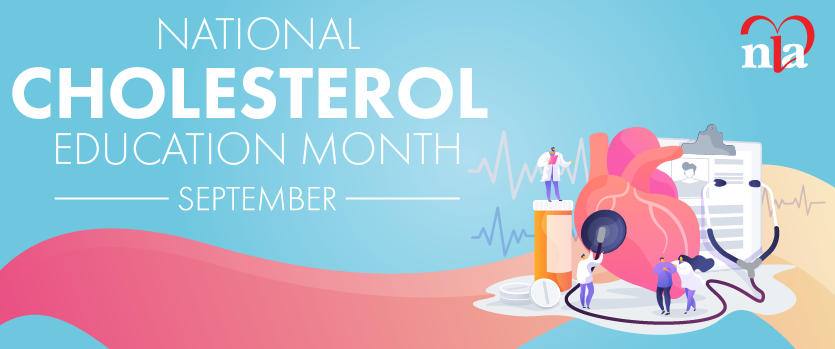JK is a 35-year-old female nonsmoker who first presented to clinical lipidology care after developing angina while breastfeeding her first child. A subsequent cardiac catheterization revealed 3-vessel disease, ultimately leading to coronary artery bypass grafting (CABG). Her low-density lipoprotein cholesterol (LDL-C) was 419 mg/dL. Her father has hypercholesterolemia and underwent CABG before age 40, after his first myocardial infarction.
JK was first diagnosed with hypercholesterolemia when she was 28 years old. Her LDL-C at the time was 370 mg/dL. She declined pharmacotherapy while trying to conceive. This pattern of high LDL-C with a family history of premature atherosclerotic cardiovascular disease (ASCVD) is consistent with the diagnosis of familial hypercholesterolemia (FH), rated as “definite” by Dutch Lipid Network (DLN) criteria A score of > 8 is considered definite FH, and her score is 11. We were the first group to identify her genetic disorder as FH by name.
During her routine follow-up, at age 38, she was treated with rosuvastatin 40 mg and ezetimibe 10 mg daily, having declined proprotein convertase subtilisin/kexin type 9 (PCSK9) inhibitors. JK received six coronary stents while maintaining a normal ejection fraction of 60% to 65%. Her treated LDL-c was 128 mg/dL on maximum oral medications. She approached her lipidologist to discuss her desire to pursue pregnancy and to consider treatment options during pregnancy. There are case reports of women having successful pregnancies after the diagnosis of ASCVD, but management needs to be on a case-by-case basis, especially with FH as a comorbidity.
When to screen for lipid disorders
Early identification and treatment of FH reduces the clinical burden of the disease, yet it is estimated that less than 10% of the U.S. population with this condition has been diagnosed.1 Clinical trials have verified that the duration of exposure to elevated atherogenic cholesterol from birth increases the severity of atherosclerosis in early adulthood by 30-50%.2,3
The National Heart Lung and Blood Institute (NHLBI) of the National Institute of Health and the American Academy of Pediatrics suggest screening lipids in children between the ages of 9 to 11, ages 17 to 20, and as early as age 2 when there is a family history of FH or premature ASCVD.2,3,4 Adult lipid screening should begin at age 20 or above if not assessed earlier in childhood, according to the 2013 ACC/AHA Guideline on the Treatment of Blood Cholesterol to Reduce Atherosclerotic Cardiovascular Risk in Adults and the 2015 National Lipid Association (NLA) Recommendations for Patient-Centered Management of Dyslipidemia.
Lipid treatment and goals for children and adults
Pediatric and adult lipid guidelines have well-defined treatment targets. Optimal therapy should begin in childhood between the ages of 8 and 10 in the presence of an LDL above 190 mg/dL with a goal of achieving greater than or equal to 50% reduction in LDL-C or below 130 mg/dL if therapy is begun after age 10. Drug therapy should be initiated in a child with homozygous FH once a diagnosis is ascertained.7,8 Statin efficacy and safety during puberty has been established, with no negative effects on hormonal control or sexual maturation noted,. The benefits of earlier initiation of statins in children are enhanced endothelial function, carotid intimal wall-thickening regression, atherosclerosis prevention and better cardiovascular (CV) outcomes.13,14,15
Ezetimibe and statins, except for pitavastatin, can be prescribed for children ages greater than or equal to 10 with pravastatin, atorvastatin, and rosuvastatin approved for ages greater than or equal to 8. The bile acid sequestrant colesevelam is also approved for children greater than or equal to 8. The adult treatment guidelines recommend using moderate- to high-intensity statin therapy for individuals with clinical ASCVD, diabetes mellitus ages 40 to 75 years old, calculated ASCVD risk score >/= 7.5%, or if age >/=21 and LDL-C >/= 190 mg/dL. Others at risk, such as patients with an LDL-C greater than or equal to160 mg/dL or a family history of premature ASCVD, may be considered for statin therapy. The NLA targets an LDL-C < 100 mg/dL for FH and <70 mg/dL for ASCVD.
Despite these recommendations, both men and women often have CV risk factors that are undertreated, resulting in unnecessary ASCVD risk. Some studies report less aggressive lipid management resulting in fewer women reaching their cholesterol goals in comparison to men. There are multiple reasons why women may be undertreated, including clinician and patient bias about CV risk in women, concerns regarding pregnancy safety, and underrepresentation in major clinical trials. When women are treated with high- intensity statins, as in the Justification for the Use of Statins in Prevention: an Intervention Trial Evaluating Rosuvastatin (JUPITER), they achieve better outcomes. Evidence from two meta-analyses of statin trials confirms reduction of major CV events and CV mortality in primary and secondary prevention. In primary prevention trials, CVD events were reduced 15% for every 18 mg/dL reduction in LDL-C. Statins reduced CVD event risk by 26% in women with a 5-year risk <10%.13,14
Management of high-risk women during pregnancy:
Physiological changes in pregnancy include a significant rise in lipids and lipoproteins driven by hormonal changes. LDL-C increases by 42% at 36 weeks, triglycerides increase up to three-fold during pregnancy, and HDL-C also increases by about 55%. Triglyceride levels rapidly normalize after delivery; however, cholesterol levels remain elevated for about 6 weeks after birth. In a normal pregnancy, these temporary increases in lipid levels are not treated and are thought to provide a reserve for maternal and fetal growth and nutrition.27
In patients with FH, there is a similar relative increase in cholesterol levels. However, the starting lipid levels are significantly higher, which exposes the mother and fetus to dangerously high lipid levels. Some studies suggest exposure to this atherogenic milieu in utero results in increased short- and long-term risk to the fetus.16,17
Although statins have well-documented benefits, they are pregnancy category X under the Code of Federal Regulations enforced by the U.S. Food and Drug Administration. The risk of statin therapy in pregnancy was evaluated in both animal and human studies. Congenital anomalies were reported, although the results varied depending on the animal model used, on the statin utilized and dose.5 Therefore, every opportunity should be taken to provide pre-pregnancy counseling to young women taking statins prior to becoming sexually active, and prescriptions should be withheld if reliable birth control is not assured. Young women with FH should be encouraged to pursue genetic counseling with their parents and sexual partner. Furthermore, lipid testing for her male partner is worthwhile for identifying the potential for conceiving a child with homozygous FH. Low-dose estrogen oral agents, intrauterine devices and barrier methods are preferred methods of birth control.18
Once a woman with FH decides to get pregnant, there is agreement that all systemically absorbed lipid-regulating drugs should be discontinued. The 2009 National Institute of Clinical Excellence (NICE) guidelines and the International FH Foundation recommend discontinuation 3 months before planned conception.7,22 The 2011 NLA Expert Panel recommend discontinuation 4 weeks before stopping contraception. Women who become pregnant while on these agents should have their medications stopped immediately. They can be reassured that the risk of congenital anomalies is low,7,20 however, they should be referred to an obstetrician for fetal assessment.
Lipid treatment options during pregnancy:
Treatment options for hypercholesterolemia in pregnancy are limited. The only oral medications considered safe for LDL-C reduction in pregnancy are bile acid sequestrants that are not systemically absorbed (Category B in pregnancy). However, caution is advised that there is interference with fat-soluble vitamin absorption, and gastrointestinal side effects are common. Colesevelam is the best tolerated of the agents. However, LDL-C reduction with this is modest, resulting in only about a 15% reduction.
The use of LDL apheresis, the extracorporeal removal of circulating apolipoprotein B (apoB)-containing lipoproteins, has been reported during pregnancy for women at high risk, and is considered relatively safe. LDL-C reduction of up to 60% is reported after a single session.24 Mipomeresen, an antisense oligonucleotide inhibitor of apoB, is a Category B medication in pregnancy. Animal studies have not shown harm if used in pregnancy. However, it has been shown in rats to be excreted in breastmilk; excretion in human milk is unknown. The safety of PCSK9 inhibitors during pregnancy or lactation also is unknown.25
Advice on breastfeeding:
Recommendations in pregnancy extend to lactation. Women should wait to initiate statin or other systemically absorbed therapy after lactation is complete.7 The FH Foundation website provides expert opinion that suggests limiting breastfeeding to 6 months. In a patient such as ours, with advanced coronary artery disease (CAD), we would discuss limiting the duration to a shorter period of time. Women of childbearing age with FH should be treated according to guidelines with an extra focus on pre-pregnancy counseling at drug initiation and annually thereafter. Management of these patients should be by a multi-disciplinary team approach and treatment should be decided on a case-by-case basis, taking into account overall risk and the presence of underlying CAD.
Summary:
Familial hypercholesterolemia (FH) is a genetic disorder that leads to substantially increased cardiac risk that runs in families. Diagnosis of FH, and screening families of affected individuals, is important because there are many approved treatments to lower risk, with statins approved as early as age 8 years old. Management of women with FH around the time of pregnancy is complicated since statin medications should be stopped prior to conception, and not restarted until after breastfeeding finishes. However, there are approved treatments of FH during pregnancy, and women with FH who are working on family planning may benefit from specialty care.
Disclosure statement: All authors of this article have no financial disclosures to report.
References available here.






.jpg)
.png)













